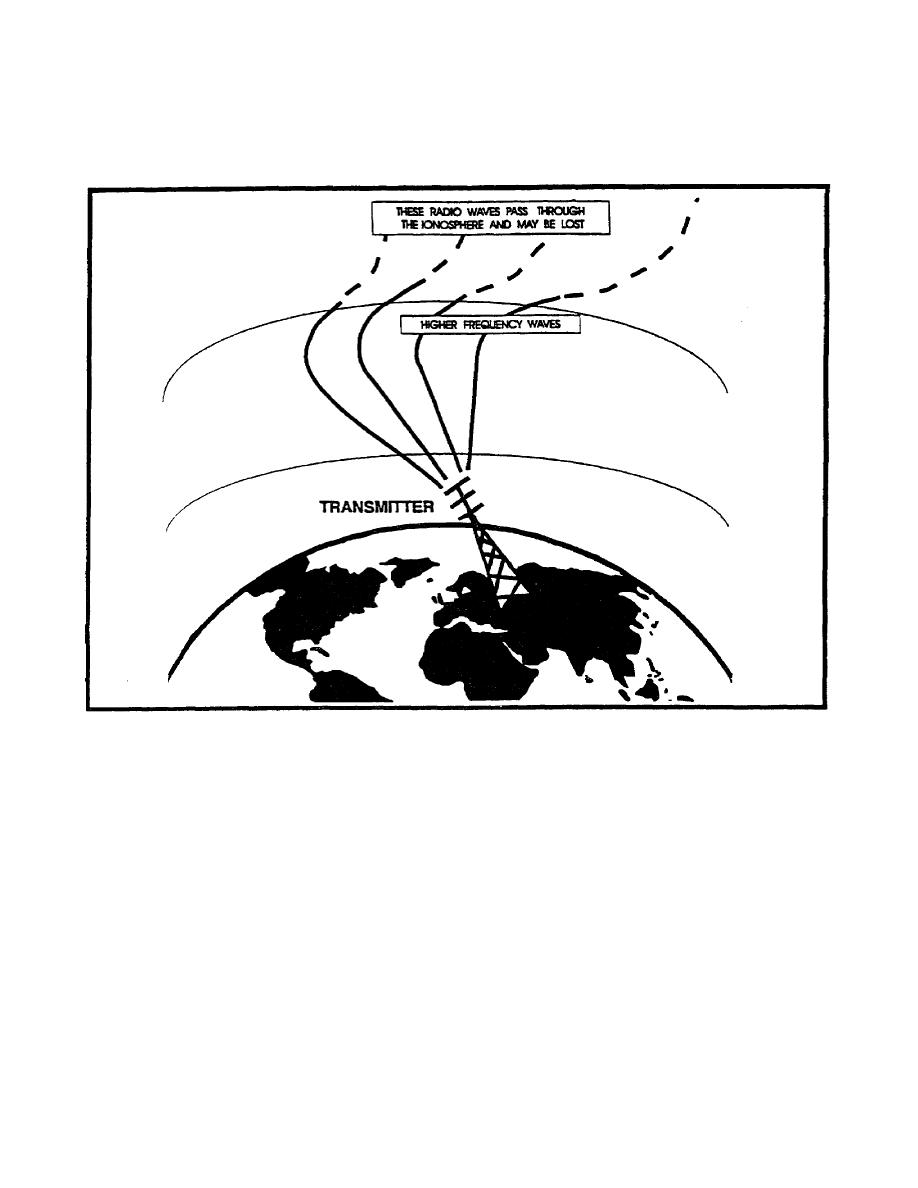
An important relationship between radio waves and the ionosphere is that the higher the
frequency, the less its tendency to bend. Depending upon ionospheric conditions and the
angle of the signal's arrival at the ionosphere, the bending may be slight. The radio waves
may not be sent back to earth (Figure 1-6).
Figure 1-6. High frequency wave penetration.
During daylight hours, the ionosphere is subject to full ultraviolet output from the sun.
Therefore, the D, E, F1, and F2 layers reach their full potential. At night, the composition of
the layers of the ionosphere changes as the F layers combine. Therefore, higher radio
frequencies are more likely to penetrate the ionosphere and be lost. As a general rule, lower
communication frequencies are used during the night.
Conversely, during the day when ionization of the atmosphere is more intense, higher
communications frequencies can be used without undue loss of the signal. This is because
penetration of the ionized layer is at a minimum. Changes in the relative proximity of the sun
to the earth will also cause gradual changes in the ionosphere.
1-7
IT0302



 Previous Page
Previous Page
